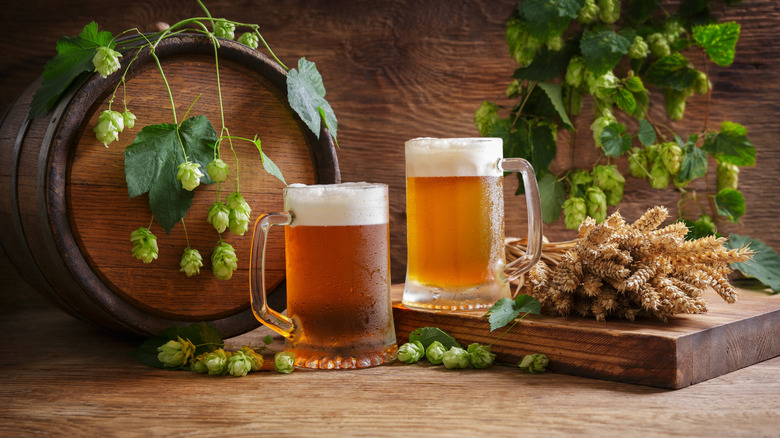The Yakima Valley: A Hidden Gem in the World of Beer
Everyone has a favorite beer. From local craft brews to regional staples, beer fans are loyal and proud of where their drink comes from. But whether your pint of choice was bottled down the street or thousands of miles away, there is a high chance its hops were sourced from the same place. Nestled deep in the heart of Washington State, the Yakima Valley is an all-around powerhouse for alcoholic beverage production. The region is perhaps best known for its designation as an American Viticultural Area, meaning it has been federally recognized for growing high-quality grapes. While you can find some of the best Rhone-style wines from Washington State here, the Yakima Valley is quietly one of the biggest hop-growing regions in the world, producing more than 75% of the United States’ supply.
For those unfamiliar, hops are the unsung hero in countless types of beer, from lagers to ales and stouts. They’re responsible for myriad complex flavors, ranging from floral and citrusy to bitter and funky. They also act as natural preservatives and foam stabilization agents. Just like wine grapes, it’s been said that hops possess terroir, meaning the natural environment the plants are grown in will impact their taste. With that in mind, it’s clear the Yakima Valley hops are desirable and ultra-flavorful, as more than 72 million pounds are harvested annually. Not to mention, the valley produces more than 130 different varieties of hops, allowing brewers to carefully select what flavors and aromas end up in their beer.
A Hoppy History of the Yakima Valley
Humulus lupulus, commonly referred to as the hop plant, is not actually native to Washington (or anywhere in the Western Hemisphere, for that matter). The viny perennial related to cannabis actually originates from Eurasia, with a range that spans from Egypt to central Europe and parts of western Russia. Hops would not see cultivation in U.S. soil until the early 1600s, when English settlers brought clippings with them across the Atlantic Ocean. Massachusetts became the first American hop capital, followed by New York. This Northeast hop dominance would end in the late 19th century, following plights with mildew.
It is said that hops were first brought westward to Washington by a man named Ezra Meeker in the 1860s. Around a decade later, after receiving clippings from his father, Charles Carpenter introduced the plant to Moxee, a small town in the Yakima Valley. The crop spread like wildfire, and Moxee was unofficially named the newest hop world capital. Catching onto the region’s success, Alexander Graham Bell, inventor of the telephone, alongside the inaugural president of the National Geographic Society, Gardiner Green Hubbard, invested in the Moxee Co., a company that encouraged American and Canadian hop farmers to set up shop in the Yakima Valley. Farmers were offered land and a stipend to get started, setting an already flourishing cash crop ablaze. During the Great Depression and Prohibition, the Yakima Valley continued on, with harvesting practices that kept consumer costs at a minimum.
The Perfect Growing Conditions
Post-Great Depression, the Yakima Valley thrived, as after harvesting the hops, farmers began to export their produce worldwide, establishing the region (and the United States as a whole) as a geographically significant component of the global beer market. Flash forward to the 21st century, and it is said that the ever-present global threat of climate change might impact beer’s future taste and price. As long-term weather patterns shift worldwide, it is estimated that annual hop crop yields could drop by about 18% by 2050.
While it is hard to say what the future may bring, the valley’s present conditions are ideal. For one, hops love soaking up the sun, and in the Yakima Valley, summer days can see around 16 hours of sunlight thanks to its northern latitude. Plus, hops do well in fast-draining, fertile soil, which the valley has in abundance. The region’s semi-arid desert climate brings dry heat by day, but thanks to advanced irrigation systems, the hops never have to worry about drying up. Not to mention, the winters are cold, allowing the plants a dormant period of rest before the following year’s harvest. Believe it or not, the conditions are so perfect in the Yakima Valley that the hop plant’s bines (a sort-of climbing vine with little hairs) can see an astounding daily growth of up to 14 inches. The region is also the only place of its kind where farmers can propagate clippings at springtime and receive an autumnal harvest just a few months later.







